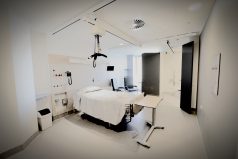Corn Plants and Patient-Lift Technology
You may be asking yourself, what does corn plants and patient-lifts have to do with one another? Depending on who you look to for the answer, an informed explanation should include how the innovation of the hybrid corn seed led to the development of a change-theory that explains in detail the processes learned from attempting to replace old traditions with modernization. The answer should include how the lessons learned from an old farm innovation can be applied to influencing practice changes in traditional nursing practice. The correlation considers the similarities which led Iowan farmers to finally accept the new hybrid corn seed as an adequate agricultural standard. This eventual acceptance now offers rational explanations for why clinicians will either choose or not choose patient-lift innovations as an acceptable clinical practice standard for lifting and moving patients. In understanding these change processes, it further explains why injury outcomes created by the inclusion of patient-lift technology are more likely to happen when aligned with a comprehensive safe patient handling program. The operational efficiency created through using patient-lift innovations are realized when clinicians are methodically led not only to incorporate, but to understand that these modernized methods remain capable of providing quality patient care.
The creation of the hybrid corn seed and the processes involved in transforming it to an acceptable agricultural standard has paved the way for creating strategies necessary towards leading professional healthcare workers to adopting patient-lift technology. Through the concepts discovered in Everett Rogers Diffusion of Innovation Theory, these practices have assisted those who attempt to change the normal way of doing things by providing an outline for change agents to follow. As it applies to professional nursing practice, whereas this theoretical philosophy for change is logical, meticulous implementation of new patient-lift processes and procedures are still required being that process methods applied to clinical practice has a direct impact on patient care. Given this level of responsibility, the diligence in which these theory based concepts are delivered is significant for the skill in which new practice processes are implemented will ultimately determine the injury prevention program’s overall level of success. Unquestionably, the techniques applied when working to influence the adoption of new innovations will be the difference between how early or how late an innovation is accepted.
Just as the hybrid corn seed would eventually lead the Iowan Farmer to maximize his profits because of its ability to grow and produce in the most extreme of climates, the transition of patient-lifts into clinical practice settings will eventually become the standard practice for lifting and moving patients. Nevertheless, patient-lift innovations acceptance in health care organizations will only be as good as the strategic processes created to lead patient-care end-users to utilize the technology while understanding the advantages of its creation.





